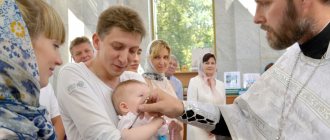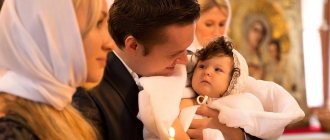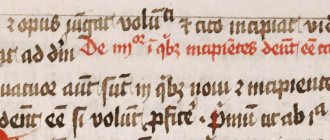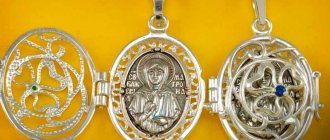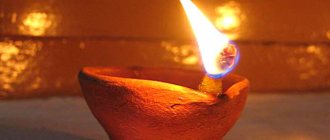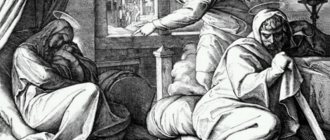In an Orthodox church, every detail has an important meaning and specific meaning. The main element of the interior decoration of the church is the altar. Not everyone is allowed to enter the holy place, which signifies heaven, where God is. Only priests do this. It is believed that Christ is unnoticeably present on the throne (a rectangular table covered with two fabrics: the lower one is white and the upper one is made of brocade).
The altar is separated from the temple hall by an iconostasis. A small part of it (called solea) symbolizes the mountain from which Christ preached, the Bethlehem cave, the stone (from which an angel announced the Resurrection of Christ). Solea settles down in front of the iconostasis. In its center there is a door that opens the passage of clergy to the altar. This is the Royal Doors. They are the most beautiful, festive part of the iconostasis.
What are the Royal Doors
The type of temple architecture did not arise immediately; it was formed over centuries. The altar with the gate appeared along with the increase in the number of believers.
The need automatically arose to create protection for the holy place from the unpredictable onslaught of temple visitors:
- The first option for protection was a “solid barrier”, which consisted of special “stasis” pillars. They were placed around the altar and rested on the ceiling. The spans between them were closed with bronze gratings. The central span was open, and through it there was a passage to the altar. The ancient Church of the Resurrection of Christ and the Bethlehem Basilica and other pilgrimage centers had this option for arranging the interior of the temple. The emperor, the current head of the community, had the right to enter the temple through the main door. Parishioners were given access through side doors.
- Another way to protect the altar was a special curtain (katapetasma), which was opened at certain moments of the liturgy. It is still found in many churches. Only after the creation of the “altar” element in Orthodox churches did the name move to another door, and its appearance was finally formed.
origin of name
An important element in the decoration of an Orthodox church is associated with the appearance of the King of Glory, Christ, to read a sermon to the laity. When the doors open, the Lord God comes out. They are called the Royal Doors in his honor.
Definition of the concept
It is believed that the existing concept appeared in the 4th century. The protective fence of the altar with specific rows of icons and the Holy Gates was finally formed in the 15th-16th centuries.
The Royal Doors in the temple are made in the form of a double door with a figured top. They are installed on two posts in front of the throne. Open for special occasions and moments of worship, determined by the charter of the church.
This is done by the priest and deacon. Those present make a bow from the waist. While moving near the gate, one must bow and make the sign of the cross. In ordinary services, the passage to the altar goes through the north and south doors (deacon's doors). Without full vestment, only the bishop is allowed to enter and exit through the sacred entrance.
In the temples of antiquity, at the main entrance there were ministers (ostarii, doorkeepers), regulating the passage of believers to the place of Communion. There were no problems opening doors or protecting the altar.
Over time, the church rite of catechumens disappeared, and there were much fewer communicants. The altar was closed from those present in the temple to avoid desecration of the Sacrament. The priest, before going to the altar, says the words of a prayer for reverence.
With the gates open and the curtain drawn back, the following are visible:
- Throne;
- mountain place;
- actions taking place inside the altar.
Symbolic meaning
In the culture of many nations, the image of a gate is associated with a ritual transition to another life situation. The space hidden behind the gate suggests the existence of mysterious forces that give a person the opportunity to change.
Symbolically, the Holy Gates of temples represent the gates of Heaven. They open the way for believers to the Kingdom of Heaven - God. Images of the evangelists of the Kingdom (Evangelists) and the Annunciation of the Blessed Virgin Mary personify the news of the beginning of the salvation of mankind.
Iconostasis of the Cathedral of Christ the Savior
The iconostasis of the Cathedral of Christ the Savior was designed in a very original way. It was designed, like the entire cathedral, by the architect Konstantin Ton. The iconostasis of the Cathedral of Christ the Savior is an octagonal chapel, decorated in the Russian style with columns, keel-shaped kokoshniks, onion domes and crowned with a bronze gilded tent. The silhouette of the iconostasis resembles the silhouettes of the Kremlin towers and the Intercession Cathedral, personifying the national Russian style, images of Moscow and Russia.
The iconostasis of the Cathedral of Christ the Savior is four-tiered. Its height together with the tent is 26.6 meters - this is higher than a six-story building. Initially, the iconostasis was made of white, veinless, Carrara marble, with ornaments and inlays made of marble of different colors. Labradorite and Shoksha quartzite-sandstone were also used for finishing. The tent, domes with crosses, royal doors and frames for icons were gilded with yellowish or greenish gold.
During the restoration of the Cathedral of Christ the Savior, extensive research was carried out. For example, in the Museum of Geology named after. Vernadsky, authentic fragments of the iconostasis were found, which made it possible to clarify its design features and color scheme. In general, the iconostasis of the Cathedral of Christ the Savior has been recreated very close to its original appearance. White, even snow-white, polished marble gives the impression of being made of porcelain
Italian Carrara marble, domestic labradorite stones, red granite, porphyry and jasper were used
Iconostasis of the Church of Pimen the Great in Novye Vorotniki
At the end of the 19th and beginning of the 20th centuries, iconostases began to be created from new, previously unused materials. Here, for example, is the Church of Pimen the Great in Novye Vorotniki. The collars in the name of the settlement do not mean a piece of clothing, but the guards at the gates who settled in this area and gave it its name.
Church of Pimen the Great in Novye Vorotniki
The church itself is old: it was built in stone in 1702 on the site of a burnt wooden one, and then it was completed more than once. And in 1897, according to the design of the architect F. Shekhtel, the interiors of the temple were updated and an iconostasis was created, which has no analogues in Moscow. It is made of Italian marble and decorated with shallow but clearly legible carvings.
Since the church has a main altar (in honor of the Holy Trinity) and two side chapels (in honor of St. Pimen and the Vladimir Icon of the Mother of God), it is appropriate to have three iconostases. But here three separate iconostases are combined into a single three-part composition
Look at the photo from 1912: the iconostasis has remained virtually unchanged and has survived to this day as it was created by the great F. Shekhtel. Perhaps this was facilitated by the fact that the temple was not closed during Soviet times, although at one time it was a stronghold of renovationists - i.e. a movement that supported Soviet power and opposed the patriarch.
All three iconostases are two-tiered. In addition to the iconostasis, a lattice around the pre-altar space is made of marble. But the free-standing icon cases are made of wood and only painted to resemble marble. I saw the interiors of this church only under the dim lighting of candles and lamps, which creates sharp shadows that highlight the carvings. But look how luxurious carved marble looks in bright light
The royal doors are decorated with images of palm branches, and the entire iconostasis is decorated with grapevines with bunches of berries
I can’t help but say about the painting of the interior of the temple: this stylization of ancient Russian tower architecture was made with great artistic taste and imagination and gives you a feeling of fairy tale and magic. The paintings were made by students of the Stroganov School based on Shekhtel’s sketches. I found information that the temple’s ornaments were made according to the designs of M.A. Vrubel, and the plant patterns remind me of Bilibin’s drawings
View from the entrance to the interior of the Church of Pimen the Great in Novye Vorotniki
Iconostasis of the Church of the Transfiguration of the Lord in Tushino
An amazing echo of this Shekhtel iconostasis is the newly created iconostasis of the Church of the Transfiguration of the Lord in Tushino in our time. The current building of the temple was built at the end of the 19th century according to the design of the architect V.O. Grudzin. During Soviet times, the temple was closed, the bell tower and dome were blown up, and the premises were given over to warehouses.
Church of the Transfiguration of the Lord in Tushino
After the return, the temple was restored with a completely new, even innovative, interior decoration. According to the plan, the design of the temple should be such as to allow Orthodox Christians from any country in the world to find a piece of their culture here. As a result, the first part of the temple is painted with frescoes, and the walls and ceiling of the central part are decorated with mosaics made of natural stone with minimal inclusions of gold smalt. Dim, but clearly readable figures in the panels evoke images of ancient catacomb or cave temples.
The restrained design of the walls, devoid of open pathos and lush jubilation, is echoed by a single-tier iconostasis, in which analogies are read not only with the Art Nouveau era, but also with ancient Georgian and Greek temples
In 1994, five artists were awarded the State Prize of the Russian Federation for the mosaic decoration of the Church of the Transfiguration of the Lord in Tushino. Subsequently, one of the artists, Alexander Davydovich Kornoukhov, was invited to the Vatican to create mosaics in the chapel of the Papal Palace for the 2000 anniversary. This chapel, according to the plan of Pope John Paul II, was to become a symbol of the unity of Orthodox and Catholic culture
Gate history
The gate acquired independent significance in the 11th century. Their appearance took on its modern state with the formation of the iconostasis in the 15th century.
Initially, curtains (katapetasmas) and low partitions were used instead of gates.
There is an opinion that the mandatory use of barriers covering the Throne was introduced by St. Basil the Great, noticing the behavior of the deacon looking back at the women in the church. Since the second millennium, curtains with images of saints have become popular in creating the interior decoration of churches. Gradually, the functions of the three doors of the barrier on the way to the altar were determined, their role in accordance with the type of church services.
Purpose and application in religion
Like any detail of an Orthodox church, the Royal Doors carry a special meaning.
Their functions can be traced by the following moments when they are opened during the Liturgy:
- In the process of the Small Entry with the Gospel. Symbol of Christ's passage to deliver the sermon. After reading the Gospel, the gates are closed. The Gospel is taken from the throne, carried out through the deacon's gate, and returned through the central door, symbolizing the Incarnation. Thanks to him, the world found a Savior.
- For the Great Entrance, when the Holy Gifts are transferred to the throne. The gate is closing. This means that the Savior descended into hell.
- After reading the Eucharistic prayers, the Church Gifts will become the Blood, the Body of Christ. The meaning is that in the Holy Gifts the Savior will be resurrected. They are brought in through the Royal Gate. Whoever receives communion with them will inherit Eternal Life.
- Before the start of the all-night vigil. The holy gates open, the priest censes. Having passed through them from the altar, he censes the temple, the praying people, and the icons. This suggests that God was in Paradise. People talked to him. After censing, the gates are closed. When the gates are open, a light comes on in the temple as a symbol of heavenly radiance.
Vizhay village
The village of Vizhay is located 66 kilometers north of the city of Ivdel , in the mountain taiga area, on the right bank of the Lozva River , at the mouth of the right tributary of the Vizhay River .
Routes to popular tourist sites begin from Vizhay Vizhay was the penultimate settlement visited by Dyatlov’s group before setting out on the fateful campaign. It was supposed to be the final destination of the active part of their route. Thanks to this, the village gained fame in documentaries and works of art.
The village of Vizhay, which burned completely in 2010 as a result of forest fires. Photo by: Alexander Morozov
On August 11, 2010, as a result of forest fires, it was almost completely burned out. There were no fatalities. The population was resettled to Ivdel . There are no official plans to restore the village.
Exterior of the holy gate
Two door leaves are decorated with figures of the Archangel Gabriel and the Virgin Mary. Together they form the scene of the Annunciation, which says that the doors of Paradise, closed after the fall of people, have opened again.
There is always an icon of the Last Supper above the gate.
The figures of the four evangelists confirm the good news and say that joining the faith and the Gospel preaching will allow a person to open the door to salvation.
The door elements were carved and covered with:
- gilding;
- silvering;
- polychrome paint;
- tin casting;
- inserts of gems.
The art of carving was passed down from father to son. Until the 16th century, carved decor was made in the form of low ornaments (braids).
In subsequent centuries, openwork cutting (through oak carving) was more often used. The floral ornament became more complex. It was called “marked grass” and was made on separate wooden plates. Later they were carefully adjusted, creating an imperceptible connection and forming a fantastic pattern of complex curls. Icons occupied a special place in the design of doors.
Icons
There are certain traditions of placing icons on door halves.
They fill the atmosphere of churches with great divine meaning:
- The icon of the Blessed Virgin Mary is located to the left of the gate.
- The doors are decorated with images of the archangels Michael and Gabriel.
- They also depict the first deacons Stephen and Philip or the high priest Aaron, the prophet Moses.
- The temple icon is placed next to the icon of the Savior (on the right).
- On the door wings there are sometimes images of saints Basil the Great and John Chrysostom, emphasizing their actions in creating the liturgy.
- The top is decorated with a cross with Christ crucified on it.
There is a north door on the left side. On the opposite side there is an icon of the Savior. The southern door is mounted on the right side of the icon.
Decoration and decoration
From the point of view of the requirements for the design and decoration of doors, the architects who performed this work were given the right to a wide choice.
The selection of icons for decorating doors expresses the following meaning:
- Image of the evangelists. Archangel Michael brings the good news of the new opening of the doors to Paradise. The Holy Gospel determines the path to it.
- In small churches, the evangelists can be depicted as symbols: Matthew - an angel, Luke - a calf, Mark - a lion, John - an eagle.
- The image of the divine meal at the top of the door suggests that the priests receive communion in the altar, and in front of it (on the salt) the Communion of the faithful takes place. The theme of the Apostles' communion confirms Christ's action as high priest.
- Instead of the “Last Supper”, the Eucharist (Communion of the Apostles by Jesus Christ) or the Old Testament or New Testament Trinity may be placed above the entrance.
Decoration elements were carved and gilded. Complex patterns were created from them in the form of grapevines and unprecedented animals.
Production and design process
The design requirements are based on the understanding that the gate leads to Paradise, the Kingdom of Heaven. In terms of location, they should stand strictly in the center along the axis of the temple. Behind them come the Throne, the high place. Icons are often placed in special temple frames. They are crowned with small domes, which symbolizes Jerusalem (Heavenly City).
Materials used
The Royal Doors can be made from any type of building materials determined by the author’s idea.
It could be:
- tree;
- marble;
- iron;
- faience;
- porcelain;
- stone.
The entrance to Paradise has always been created as the most beautiful part of the protective structure of the altar. For example, in Gzhel it is made of porcelain, in Greece there are many stone doors, in Russia there are iron doors. The determining factor in the choice of building material was most often its availability, the possibility of purchasing it near the temple.
Features of work
The appearance of the doors of the iconostasis is in harmony with it. Their flawless execution is currently done by specialists using specific documentation using modern equipment. These can be new models or restored vintage samples.
The peculiarities of the requirements of the Orthodox Church are that women are prohibited from participating in the last stage of assembly before the altar. Only men can participate in such work.
Vizhay River
rivers with this name suitable for tourist rafting in the Urals . One is in the Perm region , the second is in the north of the Sverdlovsk region . The river is fast, mountainous, the average slope is 2.2 meters per 1 kilometer. The average rafting speed along Vizhay is about 8 km/hour.
Author of the photo: Sergey Komkov
Famous Royal Doors in Russia
Each Orthodox church in Russia has its own history, ups and downs. Life circumstances often required the preservation of temple shrines. Bells and altars were destroyed, icons disappeared. Believers tried to save the shrines and preserve them for future generations. Many of them gradually ended up in museums and private property.
Nowadays you can see ancient artifacts in churches - restored, sparkling with fresh gilding. They shine with special beauty in the following churches in Russia:
- Church of the Savior on Spilled Blood. The gate with a unique design, lost in the 20s of the last century, was restored thanks to the jewelry work of specialists. Their return has been compared to the recreation of the famous Amber Room.
- Church of the Nativity of the Blessed Virgin Mary. The gate from the ancient church in the village of Monastyrshchina is distinguished by a rare pointed shield with a complex ornament, similar to the products of the Novgorod school of icon painting of the mid-16th century. The gates of the Annunciation Cathedral of the Kremlin in Moscow are also decorated.
- Church of the Transfiguration on Kizhi Island. The gates were made about 300 years ago by unknown craftsmen from pine and linden. Baroque carvings in the shape of vines and acanthus leaves are covered with gold leaf. Only the icon of the Evangelist John, made using the method of three-dimensional carving, has survived. The gate was restored between 2003 and 2007.
- St. Isaac's Cathedral, St. Petersburg. The entrance is decorated (in addition to the standard icons) with malachite columns and the sculptural group “Christ in Glory”.
The symbolism of an important church element is of great importance for believers, for any person who is aware of his sins and unseemly acts. The ways to correct them on the road to Paradise are open.
Iconostasis of Rublev
The icons and frescoes of the Trinity Cathedral were made by masters under the direction of the Rev. Andrei Rublev and Daniil Cherny. It was for this iconostasis that “Trinity” was painted - the great creation of Andrei Rublev and the most famous work of Russian icon painting in the world. Now the original is kept in the Tretyakov Gallery, and a copy is presented in the iconostasis
Iconostasis of the Trinity Cathedral of the Trinity-Sergius Lavra

